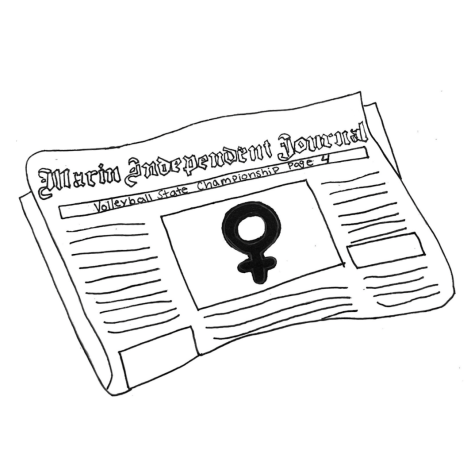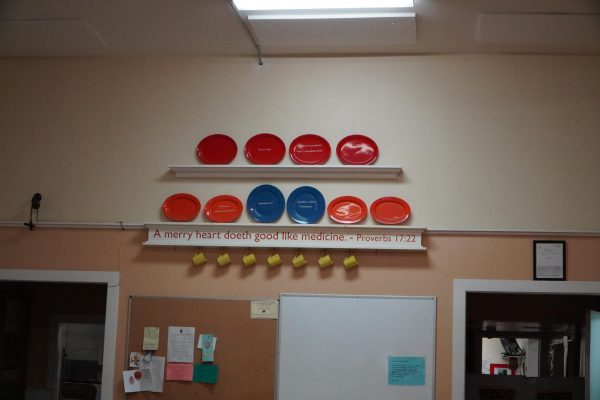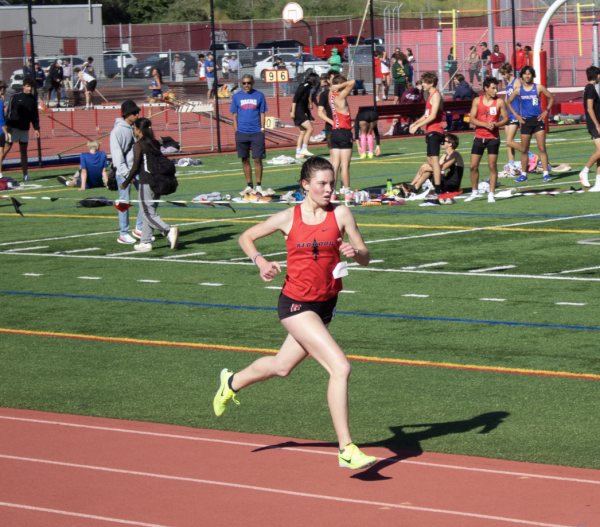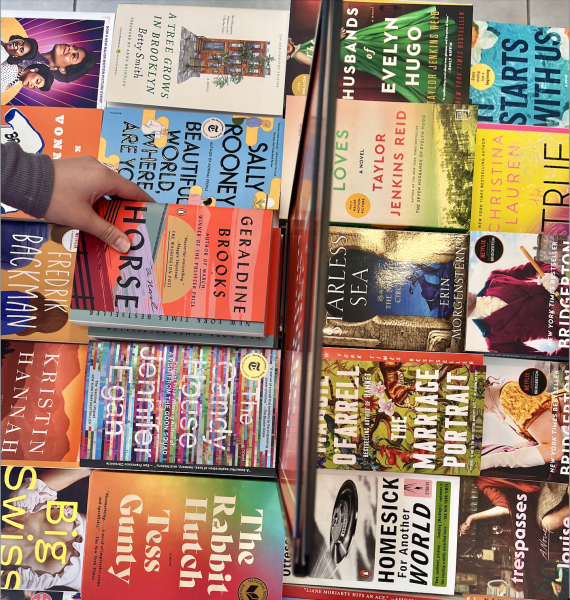Sexism in the Media: Female athletes are newsworthy too
March 6, 2023
After making the journey home from Southern California, my family still felt the high from the prior day when we watched my older sister win the Division I (DI) state volleyball title. The Marin Independent Journal (Marin IJ) newspaper soon arrived on my family’s doorstep, highlighting the most recent sports achievements. Our high quickly vanished when I leaned over my sister’s shoulder as she flipped to see her team’s accomplishments in the newspaper, but instead, saw a photo of Marin Catholic (MC) football moving on in the North Coast Section (NCS) on the front page. She was outraged that even after being the smallest school to enter DI volleyball finals and the first Branson team to win a DI state championship, her win still wasn’t significant enough to deserve the front page.
Repeatedly, boys’ sports, specifically football, gets the spotlight over girls’ teams who have won state in the IJ. This has happened to both the Branson and Archie Williams volleyball teams in 2022 and the Redwood girls’ volleyball team in 2021. Marin high school girls’ volleyball teams have made history, but that’s not enough for the Marin IJ. This lack of coverage in local newspapers of women’s athletics displays sexism by focusing on male-dominated sports. To eradicate this problem, news organizations should hire female sports editors to even out their coverage of both sexes in sports.

In 2021, both MC football and San Marin football won their state championships: MC won the Division IV title, and San Marin won the Division V title. Both teams won state the same day and received front-page coverage in the next Marin IJ newspaper. Redwood girls’ volleyball also won its first state championship in Division II in 2021. While the girls’ volleyball team won in a higher division, it was still not featured on the paper’s front page, which outraged the community and led community members to send multiple complaint emails to the Marin IJ.
The lack of coverage for female athletics is a problem in our media, our local newspaper and nationwide. According to the University of San Diego School of Education, men’s sports receive 96.3 percent of television airtime, while women’s sports receive 1.6 percent. These statistics don’t allow female athletes to compete with the male athletic media. More people are watching male sports because it is more accessible, leading to male teams making more money from the media – even in our county.
Not only are female athletes treated differently by the media, but they are also treated differently by people worldwide. Female sporting environments continue to be downgraded by being held at a consistently lower level than male athletic facilities. The media is a source that can help counteract this global issue, but instead, they just add to the problem by discriminating against female athletes. According to Zippa, only 38.4 percent of athletes are female, and when they don’t get the opportunity to see other women in the newspaper, it can become discouraging. Teenage girls are two times more likely to quit their sport than males. While male athletes are encouraged to keep playing sports because they see their role models in the paper and the news, women don’t have this same opportunity.
Some believe that people don’t care about female sports, thus they shouldn’t be reported on, but this is untrue. In 2019, 14.3 million U.S. viewers watched the Women’s World Cup, while 11.3 million U.S. viewers tuned in to the 2018 Men’s World Cup, according to Consumer News and Business Channel. Repeatedly in our community, women’s volleyball games are sold out, and the stands are packed with cheering students, parents and community members. People look forward to cheering on their female peers. However, the football stands are rarely packed whenever I attend a game at my high school, and it is not challenging to come by a ticket. People show up for female athletes, and it is a falsity that people do not watch or care about women’s athletics. The media needs to realize that people support and watch women, and it is worth the time of the media to write about.
The Marin IJ needs more female sports reporters to help make the media more balanced because only 23 percent of women are top editors worldwide. The Marin IJ needs an additional female sports reporter to have an equal opinion on what games deserve coverage and which do not. Female athletes must get the same opportunity to see themselves in the paper as males.



















